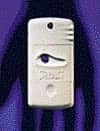| Research Questions Bronchiolitis Treatments Although doctors commonly use a wide array of medications to treat bronchiolitis, no compelling evidence currently supports their use, according to a recent report sponsored by the federal Agency for Healthcare Research and Quality (AHRQ).
Yet, whether the medications actually work will not be known until they are studied in well-designed, adequately sized randomized clinical trials, say researchers. Also, because of adverse events found in previous research, the researchers caution using inhaled budesonide and alpha-2-interferon to treat bronchiolitis. In addition, the researchers found no evidence that laboratory tests, complete blood counts, or chest x-rays, which are sometimes used to diagnose bronchiolitis, are superior to a carefully conducted medical history and physical examination. However, they did find evidence that supports the use of palivizumab as a preventative medicine, administered once a month intramuscularly, to protect high-risk infants and children who have underlying bronchopulmonary dysplasia or who were born prematurely and are under 6 months of age. The report was requested by the American Academy of Pediatrics and the American Academy of Family Physicians. AHRQ, a part of the US Department of Health and Human Services, supports research designed to improve the quality of health care, reduce its cost, improve patient safety, decrease medical errors, and broaden access to essential services. |

A new catheter-based artificial lung may give soldiers wounded in action a fighting chance at recovery. Developed by the University of Pittsburgh’s Artificial Lung Laboratory, the catheter is designed to be inserted into the femoral artery in the leg and snaked into the right atrium and the superior vena cava. It bypasses the damaged lungs and pumps oxygen directly into the bloodstream from a control unit attached to the shank of the catheter by a bundle of hollow membranes. Carbon dioxide diffuses into the fibers and is removed from the system through a vacuum device.
Because the current version of the catheter device is rather large—9 to 10 mm in diameter—William Federspiel, PhD, director of the Artificial Lung Laboratory, McGowan Institute of Regenerative Medicine, University of Pittsburgh, expects that soldiers will have it inserted at a field hospital in more controlled conditions instead of the chaos of the battlefield. But the technology is a work in progress.
“I think our current design is more or less set, but we are working on fairly radical new technology in the laboratory that might go a long way in improving the performance of the device either by increasing the level of gas exchange or by allowing the device to be made smaller,” he says.
The catheter project has received funding from both the Department of Defense (DOD) and the National Institutes of Health, and has been in development at the university since 1995.
The catheter has passed initial tests in calves, which mimic the size of an adult human, and will move to human testing in late 2004. A second wave of animal testing is also planned for the DOD, this time looking at the effectiveness of the catheter in treating those who have experienced a blunt force lung injury.
Federspiel says that the catheter has obvious civilian applications, particularly in treating emphysema patients, which is the subject of the human trials planned for next year. A private company will develop the catheter for commercial use, which, if everything goes according to plan, should be approved and on the US market by 2006.
—C.A. Wolski
In Utero Smoke Exposure Plus Childhood Asthma Equals Poor Lung Function
Children with early onset asthma and who had in utero exposure to smoking may be at a high risk for adverse respiratory health during their life course due to large lung deficits, according to a recent study.
Investigators noted, however, that they did not observe any independent effect of only environmental tobacco smoke exposure on children’s lung function. The study appeared in the second issue for March of the American Thoracic Society’s Journal of Respiratory and Critical Care Medicine.

Artists Explore Insomnia
“I am an insomniac, so for me the state of being asleep is paradise. It is a paradise I can never reach. But I still try to conquer the insomnia, and to a large extent I have done it; it is conquerable. My drawings are a kind of rocking and stroking and an attempt at finding a kind of peace. Peaceful rhythm like rocking a baby to sleep.”
Those are the words of Louise Bourgeois, a 91-year-old artist who finds inspiration in sleepless hours at night. Her artwork—along with that of 29 others—is on display at the National Museum of Women in the Arts (NMWA) in Washington, DC. The exhibition, called “Insomnia: Landscapes of the Night,” includes paintings, drawings, assemblages, and artists’ books.
“While Louise Bourgeois is the classic example of an obsessive insomniac, having published two volumes of drawings on the subject, most other artists in the show see their art simply as a therapeutic remedy for sleeplessness,” says Krystyna Wasserman, NMWA curator of book arts and curator of the exhibition. “After a night spent working on their creations, these women find that they can finally rest.”
The collective 51 works look at the manifestations and causes of insomnia, including love, death, loneliness, and motherhood.
One of Bourgeois’ pieces displays a visual and verbal diary of her sleepless nights using blue, black, and red ballpoint pens on more than 220 scraps of paper. M. Jordan Tierney’s mixed-media assemblage “Emprise at 4 am” (2001) portrays a predawn voyage. Its female figure facing the wind is, for the artist, “a symbol of bravery forging alone onward in the hours of the night.”

Bonnie Lee Holland’s life-size installation “Bedroom, Version III” (1997-2000) features an empty bed constructed of cardboard boxes, garbage bags, and discarded newspapers and covered by a quilt stitched with personal ads and articles on aging and relationships. The nightstand is created from a pile of romance novels.
The exhibition runs through November 30, 2003. For more information, visit the museum’s Web site, www.nmwa.org.
| Sleep-Disordered Breathing Targets Menopausal Women Women who have reached menopause incur a greater risk of suffering from sleep-disordered breathing (SDB) than premenopausal women, according to a recent study. “From media reports and popular magazine articles, women expect that they will have sleep problems when they reach menopause,” says Terry Young, PhD, of the Department of Population Health Sciences, University of Wisconsin-Madison. “Thus, it is very likely that SDB in menopausal women who complain of sleepiness and disturbed sleep may be overlooked as typical sleep problems of menopause.” Therefore, an SDB evaluation should be a priority for those with complaints of snoring, daytime sleepiness, or unsatisfactory sleep, according to the results of the study, published in the first issue for May 2003 of the American Journal of Respiratory and Critical Care Medicine. Young and her three associates studied a population-based sample of 589 women enrolled in the Wisconsin Sleep Cohort Study. They noted that menopause has been associated with weight gain, loss of muscle and bone mass, and increases in fat and abdominal depositions of fat, a high body mass index, and increased neck girth—all strong risk factors for SDB. Air Pollution Inflates Health Problems in Some Elderly The authors point to controlled studies in humans that show that exposure to concentrated particles from the environment has resulted in pulmonary inflammation and lung injury in adults. Consequently, harmful effects on the lung could affect those with preexisting circulatory conditions. The study appeared in the second issue for April 2003 of the American Thoracic Society’s peer-reviewed American Journal of Respiratory and Critical Care Medicine. |

 A common lower-respiratory tract disease among infants and toddlers, bronchiolitis is part of a family of diseases that affect airways in the lungs. Physicians often use medications such as inhaled, oral, or intravenous corticosteroids, inhaled epinephrine, and nebulized bronchodilators to treat it because they are inexpensive and generally considered to be safe, according to the AHRQ.
A common lower-respiratory tract disease among infants and toddlers, bronchiolitis is part of a family of diseases that affect airways in the lungs. Physicians often use medications such as inhaled, oral, or intravenous corticosteroids, inhaled epinephrine, and nebulized bronchodilators to treat it because they are inexpensive and generally considered to be safe, according to the AHRQ. 







